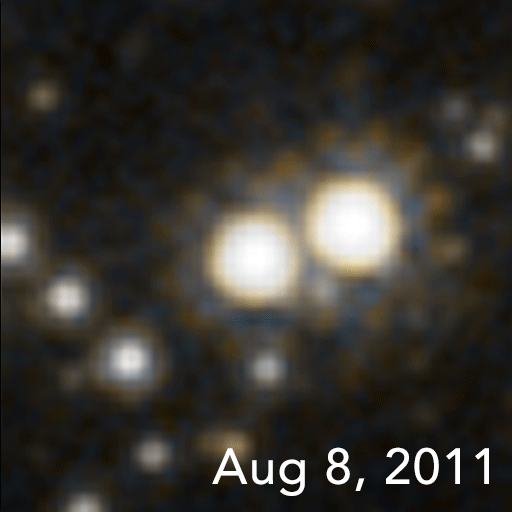Rogue Black Hole on:
[Wikipedia]
[Google]
[Amazon]
 A rogue black hole (also termed a free-floating, interstellar, nomad, orphan, unbound or wandering black hole) is an
A rogue black hole (also termed a free-floating, interstellar, nomad, orphan, unbound or wandering black hole) is an
 A rogue black hole (also termed a free-floating, interstellar, nomad, orphan, unbound or wandering black hole) is an
A rogue black hole (also termed a free-floating, interstellar, nomad, orphan, unbound or wandering black hole) is an interstellar object
An interstellar object is an astronomical object (such as an asteroid, a comet, or a rogue planet, but not a star) in interstellar space that is not gravitationally bound to a star. This term can also be applied to an object that is on an inter ...
without a host galactic group. They are caused by collisions between two galaxies or when the merging of two black holes is disrupted. It has been estimated that there could be 12 rogue black holes in the Milky Way
The Milky Way is the galaxy that includes our Solar System, with the name describing the galaxy's appearance from Earth: a hazy band of light seen in the night sky formed from stars that cannot be individually distinguished by the naked eye ...
galaxy.
OGLE-2011-BLG-0462/MOA-2011-BLG-191
In January 2022, a team of astronomers reported ofOGLE-2011-BLG-0462
OGLE-2011-BLG-0462, also known as MOA-2011-BLG-191, is a stellar-mass black hole isolated in interstellar space. OGLE-2011-BLG-0462 lies at a distance of 5,000 light years in the direction of the galactic bulge in the constellation Sagittarius. ...
the first unambiguous detection and mass measurement of an isolated stellar black hole
A stellar black hole (or stellar-mass black hole) is a black hole formed by the gravitational collapse of a star. They have masses ranging from about 5 to several tens of solar masses. The process is observed as a hypernova explosion or as a gam ...
using the Hubble Space Telescope
The Hubble Space Telescope (often referred to as HST or Hubble) is a space telescope that was launched into low Earth orbit in 1990 and remains in operation. It was not the first space telescope, but it is one of the largest and most versa ...
together with the Microlensing Observations in Astrophysics
Microlensing Observations in Astrophysics (MOA) is a collaborative project between researchers in New Zealand and Japan, led by Professor Yasushi Muraki of Nagoya University. They use microlensing to observe dark matter, extra-solar planets, and ...
(MOA) and the Optical Gravitational Lensing Experiment
The Optical Gravitational Lensing Experiment (OGLE) is a Polish astronomical project based at the University of Warsaw that runs a long-term variability sky survey (1992–present). The main goals are the detection and classification of variable ...
(OGLE). This black hole is located 5,000 light-year
A light-year, alternatively spelled light year, is a large unit of length used to express astronomical distances and is equivalent to about 9.46 trillion kilometers (), or 5.88 trillion miles ().One trillion here is taken to be 1012 ...
s away, has a mass 7.1 times that of the Sun, and moves at about 45 km/s. While there have been other candidates, they have been detected more indirectly.
See also
*Rogue planet
A rogue planet (also termed a free-floating planet (FFP), interstellar, nomad, orphan, starless, unbound or wandering planet) is an interstellar object of planetary-mass, therefore smaller than fusors (stars and brown dwarfs) and without a h ...
*Black hole
A black hole is a region of spacetime where gravitation, gravity is so strong that nothing, including light or other Electromagnetic radiation, electromagnetic waves, has enough energy to escape it. The theory of general relativity predicts t ...
*Stellar black hole
A stellar black hole (or stellar-mass black hole) is a black hole formed by the gravitational collapse of a star. They have masses ranging from about 5 to several tens of solar masses. The process is observed as a hypernova explosion or as a gam ...
References
Black holes {{astronomy-stub